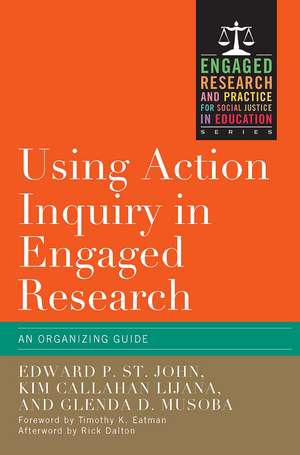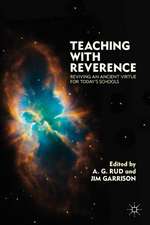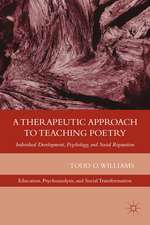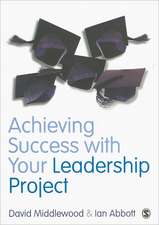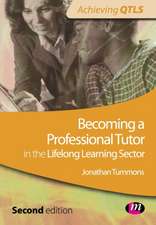Using Action Inquiry in Engaged Research: An Organizing Guide
Autor Edward P. St. John, Kim Callahan Lijana, Glenda D. Musobaen Limba Engleză Paperback – 30 ian 2017
| Toate formatele și edițiile | Preț | Express |
|---|---|---|
| Paperback (1) | 243.26 lei 6-8 săpt. | |
| Taylor & Francis – 30 ian 2017 | 243.26 lei 6-8 săpt. | |
| Hardback (1) | 997.77 lei 6-8 săpt. | |
| Taylor & Francis – 15 feb 2017 | 997.77 lei 6-8 săpt. |
Preț: 243.26 lei
Nou
Puncte Express: 365
Preț estimativ în valută:
46.55€ • 48.33$ • 38.82£
46.55€ • 48.33$ • 38.82£
Carte tipărită la comandă
Livrare economică 22 martie-05 aprilie
Preluare comenzi: 021 569.72.76
Specificații
ISBN-13: 9781579228354
ISBN-10: 1579228356
Pagini: 164
Dimensiuni: 152 x 229 x 16 mm
Greutate: 0.26 kg
Ediția:1
Editura: Taylor & Francis
Colecția Routledge
Locul publicării:Oxford, United Kingdom
ISBN-10: 1579228356
Pagini: 164
Dimensiuni: 152 x 229 x 16 mm
Greutate: 0.26 kg
Ediția:1
Editura: Taylor & Francis
Colecția Routledge
Locul publicării:Oxford, United Kingdom
Public țintă
Postgraduate and Professional Practice & DevelopmentNotă biografică
Edward P. St. John is Algo D. Henderson Collegiate Professor of Education at the University of Michigan’s Center for the Study of Higher and Postsecondary Education. He is interested in education, justice, and public policy. He serves as series editor for Readings on Equal Education and has received awards for his leadership from the Association for the Study of Higher Education and for scholarship from the National Association of Student Financial Aid. Kim Callahan Lijana Glenda D. Musoba
Cuprins
Tables Figures Foreword—Timothy K. Eatman Acknowledgments Introduction 1. Getting Started 2. Focus on Barriers to Social Justice 3. Organizing for Change 4. Using Information for Change 5. Learning From Experience Afterword—Rick Dalton References About the Contributors Index
Recenzii
"This guide demonstrates informationally rich and pedagogically intriguing strategies that can be effectively infused into practice. If readers are like me the will find themselves rolling up their sleeves while gleaning from its insights."
Timothy K. Eatman, Dean, Honors Living Learning Community, Rutgers University-Newark
“St. John’s book is an essential read for any activist, educator or researcher committed to effecting meaningful social change. It is a clear and critical elaboration on the use of the Action Inquiry Model (AIM) in educational partnerships to identify, assess and address issues relating to gaps in opportunity. St. John uses a range of case studies to demonstrate the power of a structured learning partnership between university, school and non-profit and to re-define organizational boundaries and roles in the process – researcher as learner, educator as researcher, CEO as research student, student as agent of social change. St. John demonstrates that it is through this re-definition of roles and how we understand organizational boundaries that we can bring data to life and use it to change our world.”
Cliona Hannon, Director, Trinity Access Programmes
Trinity College (University of) Dublin
"In the Foreword to Using Action Inquiry in Engaged Research: An Organizing Guide by Edward P. St. John, Kim Callahan Lijana, and Glenda D. Musoba, Timothy Eatman persuasively observes that the text “reads in part like a synthesized collection of professional development modules” (p. xii). Drawing on a series of case studies of initiatives to promote college access, which began in 2009, the authors explain and offer examples of their Action Inquiry Model (AIM). The model calls for partnerships among schools, universities, and nonprofit organizations to develop actionable theories to identify and address gaps in opportunity for students’ access to college.
In sum, educators, administrators, and scholar-practitioners of school reform can glean useful insights from Using Action Inquiry in Engaged Research. It may be worth their while to push past the book’s issues with organization to add some new strategies to their repertoires. However, I would recommend instead that those interested in partnerships to effect deep change in issues of equity in schools turn to the body of scholarship on Participatory Action Research (PAR) for education reform (Cammarota & Fine, 2010; Fox et al., 2010; Pyne, Scott, & Long, 2013). PAR elucidates the issues that are important to a community through dialogue and collaborative data collection and analysis, and then creates and implements a plan of action to address these issues. In contrast to the Action Inquiry Model, PAR is grounded in a rich, coherent conceptual framework, and engages a broader group of participants in research to address inequities in education."
Partnerships: A Journal of Service-Learning and Civic Engagement
“In Using Action Inquiry in Engaged Research, Edward P. St. John, Kim Callahan Lijana, and Glenda D. Musoba offer readers a guide for organizing and using information for social justice in education. The authors pair a description of the Action Inquiry Method (AIM) with practices for the reader to use in his or her own context. In addition, the authors employ specific cases to explicate the relation of practitioners, institutions, partners, and researchers. Each case is followed by questions for individual or group reflection. The book includes sections written by researchers and practitioners, which models the varied roles and approaches to AIM as well as the benefits and challenges of collaboration in engaged research for social justice.
The book…enables and encourages practitioners and researchers as they begin to engage AIM for the first time or collaborate in a new setting. As ‘an organizing guide,’ [it] provides specific questions for the reader to use in assessing a situation and organizing a response.”
Reflection in Action
From the Foreword:
“Let Using Action Inquiry in Engaged Research help you better understand your environment, practices and beliefs and to see your students, your strategies and even your organization in new ways. Dynamic organizations are forever shifting and adapting as they respond to an ever more rapidly changing external environment. Never waver from your core beliefs. Never take your eye off the ball (helping underserved populations), but keep testing your theories and approaches through action inquiry. You and the students you serve will be the beneficiaries.”
Rick Dalton, CEO
College For Every Student
Timothy K. Eatman, Dean, Honors Living Learning Community, Rutgers University-Newark
“St. John’s book is an essential read for any activist, educator or researcher committed to effecting meaningful social change. It is a clear and critical elaboration on the use of the Action Inquiry Model (AIM) in educational partnerships to identify, assess and address issues relating to gaps in opportunity. St. John uses a range of case studies to demonstrate the power of a structured learning partnership between university, school and non-profit and to re-define organizational boundaries and roles in the process – researcher as learner, educator as researcher, CEO as research student, student as agent of social change. St. John demonstrates that it is through this re-definition of roles and how we understand organizational boundaries that we can bring data to life and use it to change our world.”
Cliona Hannon, Director, Trinity Access Programmes
Trinity College (University of) Dublin
"In the Foreword to Using Action Inquiry in Engaged Research: An Organizing Guide by Edward P. St. John, Kim Callahan Lijana, and Glenda D. Musoba, Timothy Eatman persuasively observes that the text “reads in part like a synthesized collection of professional development modules” (p. xii). Drawing on a series of case studies of initiatives to promote college access, which began in 2009, the authors explain and offer examples of their Action Inquiry Model (AIM). The model calls for partnerships among schools, universities, and nonprofit organizations to develop actionable theories to identify and address gaps in opportunity for students’ access to college.
In sum, educators, administrators, and scholar-practitioners of school reform can glean useful insights from Using Action Inquiry in Engaged Research. It may be worth their while to push past the book’s issues with organization to add some new strategies to their repertoires. However, I would recommend instead that those interested in partnerships to effect deep change in issues of equity in schools turn to the body of scholarship on Participatory Action Research (PAR) for education reform (Cammarota & Fine, 2010; Fox et al., 2010; Pyne, Scott, & Long, 2013). PAR elucidates the issues that are important to a community through dialogue and collaborative data collection and analysis, and then creates and implements a plan of action to address these issues. In contrast to the Action Inquiry Model, PAR is grounded in a rich, coherent conceptual framework, and engages a broader group of participants in research to address inequities in education."
Partnerships: A Journal of Service-Learning and Civic Engagement
“In Using Action Inquiry in Engaged Research, Edward P. St. John, Kim Callahan Lijana, and Glenda D. Musoba offer readers a guide for organizing and using information for social justice in education. The authors pair a description of the Action Inquiry Method (AIM) with practices for the reader to use in his or her own context. In addition, the authors employ specific cases to explicate the relation of practitioners, institutions, partners, and researchers. Each case is followed by questions for individual or group reflection. The book includes sections written by researchers and practitioners, which models the varied roles and approaches to AIM as well as the benefits and challenges of collaboration in engaged research for social justice.
The book…enables and encourages practitioners and researchers as they begin to engage AIM for the first time or collaborate in a new setting. As ‘an organizing guide,’ [it] provides specific questions for the reader to use in assessing a situation and organizing a response.”
Reflection in Action
From the Foreword:
“Let Using Action Inquiry in Engaged Research help you better understand your environment, practices and beliefs and to see your students, your strategies and even your organization in new ways. Dynamic organizations are forever shifting and adapting as they respond to an ever more rapidly changing external environment. Never waver from your core beliefs. Never take your eye off the ball (helping underserved populations), but keep testing your theories and approaches through action inquiry. You and the students you serve will be the beneficiaries.”
Rick Dalton, CEO
College For Every Student
Descriere
Using Action Inquiry in Engaged Research: An Organizing Guide offers higher education and school professionals practical guidance and methods for using the Action Inquiry Model (AIM) in engaged research initiatives and community partnerships.
